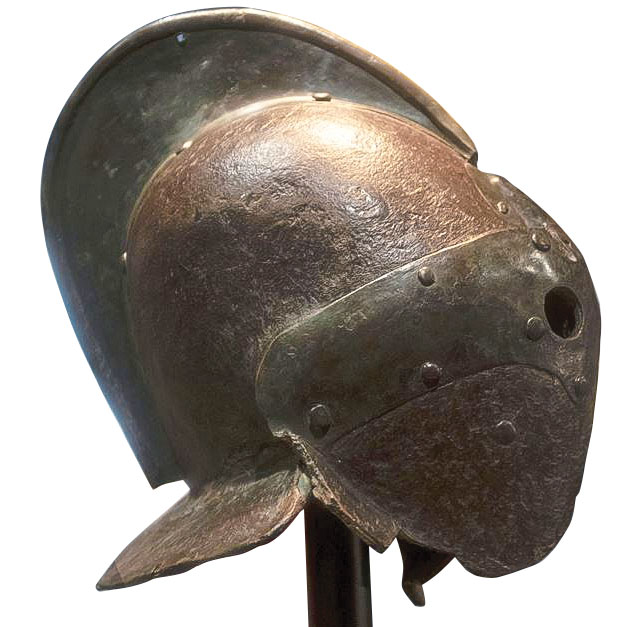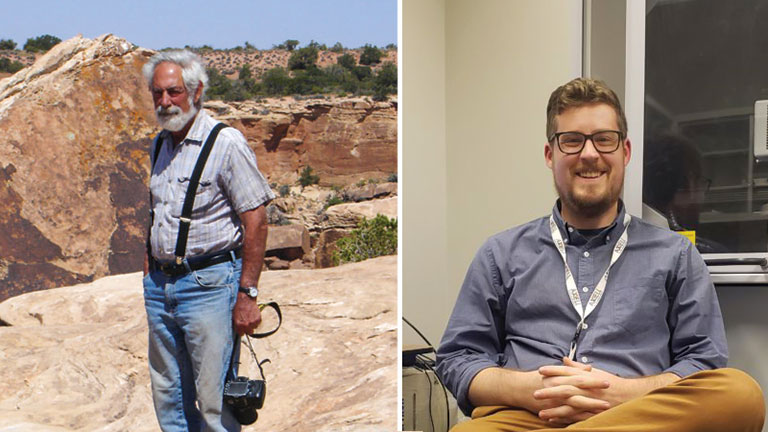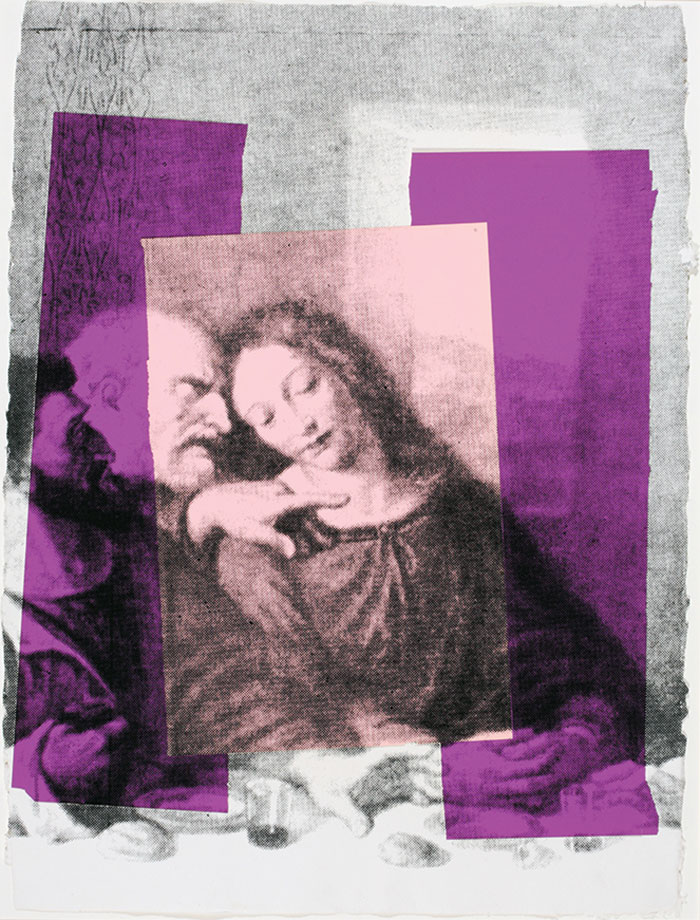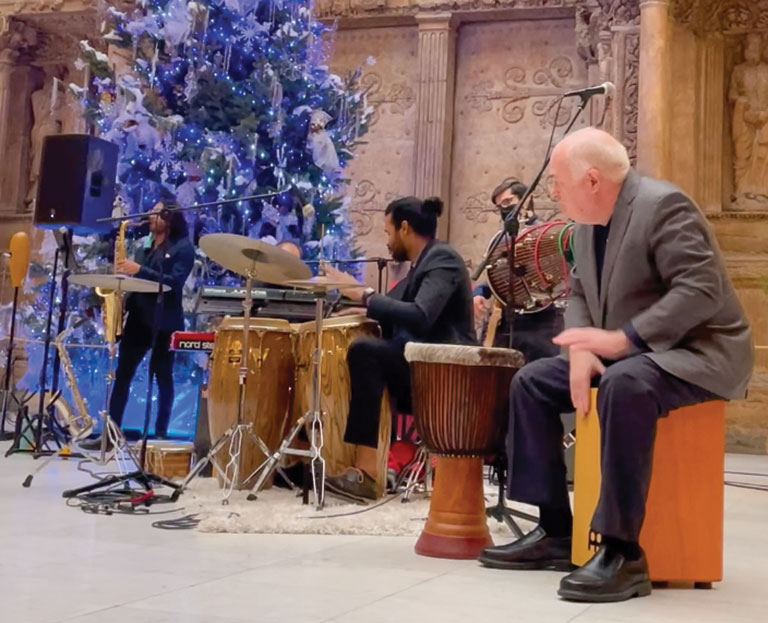
Historic Gladiator Helmet, Restored
On January 11, Carnegie Science Center unveiled a new addition to the 180 artifacts on display as part of POMPEII: THE EXHIBITION—a gladiator helmet from 79 A.D., made of cast iron and copper alloy and weighing in at 25 pounds. Sent to Pittsburgh by the Naples Archaeological Museum to be restored by local conservator Michael Belman, the ancient headgear is now on display in the U.S. for the first time. Belman, previously an objects conservator at Carnegie Museum of Art, and his wife Chantal Bernicky, also a restoration specialist, spent several days restoring the dramatic piece of Roman history. POMPEII continues through April 24.

Dave Berman and Travis Olds
What’s in a Name?
It’s recognition for the ages: having a scientific specimen named in your honor. And in January, an international team of researchers announced that a new fossil species of an early mammal relative had been named for paleontologist David Berman, Carnegie Museum of Natural History’s curator of vertebrate paleontology for 44 years. Berman retired in 2014 as curator emeritus. The fossil, Shashajaia bermani—or “Berman’s bear heart”— is from a bonebed co-discovered by Berman in 1989 in Utah’s Bears Ears National Monument. Berman’s decades of research in the area helped demonstrate the need for the creation of the monument in 2016. In December 2021, the Museum of Natural History announced another naming honor: a new mineral, Oldsite, had been named after its assistant curator of minerals, Travis Olds, in recognition of his contributions to uranium minerology. At the ripe old age of 31, Olds has helped describe more than 25 new minerals, most of them “secondary uranium minerals” like Oldsite. The International Mineralogical Association verified the new mineral, which was accepted in October 2021 by an international team of scientists

Andy Warhol, The Last Supper (detail), 1986, The Andy Warhol Museum © The Andy Warhol Foundation for the Visual Arts, Inc.; Founding Collection, Contribution The Andy Warhol Foundation for the Visual Arts, Inc.
“While Warhol’s career celebrated hypervisibility, the public has willingly cast a blind eye towards his unwavering religious devotion, as though we cannot process that the Queer King of Plastic could contain such multiplicities. This is where the exhibition shines.”
–W magazine, on the opening of Andy Warhol: Revelation at the Brooklyn Museum

President on Percussion
When Cuban percussionist Hugo Cruz and his band performed at Carnegie Museum of Art in December, they were joined by Carnegie Museums President Steve Knapp, who has been playing drums since the fourth grade and nearly majored in music. Knapp met Cruz at his band’s Inside Out concert last summer and has since played with Cruz in his Southside studio. When the museum invited Cruz for a return engagement, he invited Knapp to join his band as a guest percussionist. Knapp played two of his own instruments—an Afro-Peruvian box drum called a cajón, and a West African goatskin drum called a djembe, a generous gift from a friend who was a member of a Senegalese royal family and had the drum made for him and personally carried it on a flight across the Atlantic. “This event was meaningful to me for three reasons,” Knapp says. “It was my first opportunity to play publicly in Pittsburgh, my first opportunity to play the djembe in public, and, above all, my first opportunity to play in one of our museums!”
Receive more stories in your email
Sign upTags:
Where Art & Science Meet